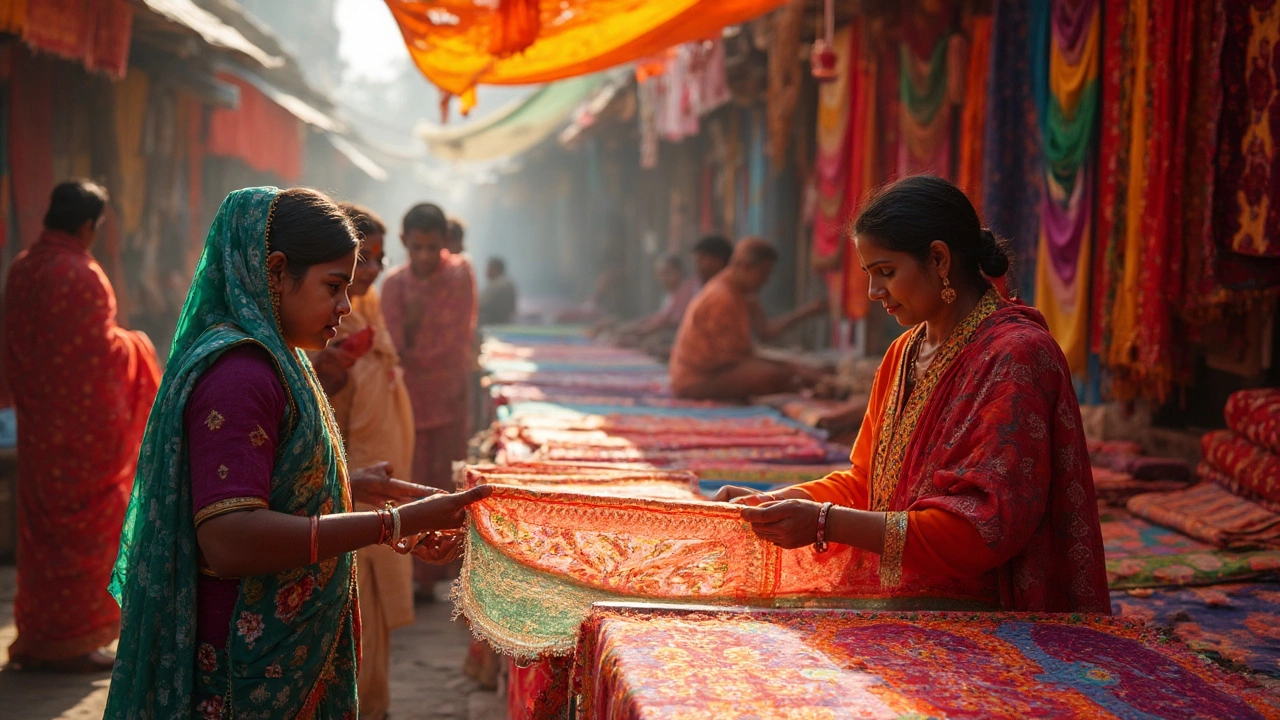Bandhani: The Tie‑Dye Tradition That Still Rocks India
Ever wonder why you see bright, dotted fabrics at Indian weddings and festivals? That’s Bandhani – a centuries‑old tie‑dye method that turns simple cotton or silk into eye‑catching art. The name comes from the word “band” meaning to bind, because the process starts by tying tiny knots on the cloth before dyeing.
Originally practiced in Gujarat and Rajasthan, Bandhani was a mark of status. Only the wealthy could afford the time‑intensive work, and special patterns signaled a family’s social rank. Today, anyone can pick up a piece, but the skill still takes patience and a steady hand.
How Bandhani Is Made – Step by Simple Step
First, the fabric is washed and dried. Then the artisan uses a sharp needle or thumb to tie tiny knots in the weave. The tighter the knot, the less dye gets in, creating the characteristic white dots on colored backgrounds. After tying, the cloth is soaked in a dye bath – traditionally indigo for blue, red for vermilion, or yellow for turmeric tones.
Once the dye sets, the knots are carefully unwound. The result? A pattern of crisp dots, circles, or intricate motifs that look like a field of stars. Common designs include leher (wave), gitti (dot), and khat (line). Each region has its own favorite shapes, so a Bandhani from Kutch will look different from one made in Saurashtra.
Why Bandhani Still Matters in Modern Manufacturing
Even though Bandhani is a hand‑crafted art, it influences today’s textile factories. Large producers use the same knot‑tying concepts with machines to create consistent patterns at scale. This blend of tradition and tech lets Indian fabric exporters meet global demand without losing the look that makes Bandhani unique.
Small‑scale entrepreneurs also benefit. By learning the basic tie‑dye steps, they can add a handcrafted line to their catalog, charge premium prices, and tap into the growing market for authentic, sustainable fashion. Many start‑ups partner with local weavers, turning Bandhani into a win‑win for both sides.If you’re thinking about launching a Bandhani‑inspired product, start with a few test runs. Use a cotton base, practice the knot density, and experiment with natural dyes. Keep records of how long each step takes – that data will help you scale later without sacrificing quality.
Finally, remember that Bandhani isn’t just a pattern; it’s a story. Each dot represents a tiny decision made by an artisan, a cultural link passed down through generations. When you wear or sell a Bandhani piece, you’re sharing that story with the world.
So next time you spot a burst of tiny circles on a shirt or scarf, you’ll know the centuries‑old craft behind it and how modern makers keep the tradition alive, one knot at a time.

Gujarat Famous Cloth: What Makes Its Textiles Stand Out
Gujarat is a powerhouse in India’s textile scene, known for unique fabrics like Bandhani, Patola, and Ajrakh. The state’s textile heritage stretches back centuries, combining traditional skills with modern innovations. Artisans use age-old methods that give every piece special character and quality. Today, Gujarat’s textiles support entire communities and attract buyers worldwide. If you want to understand what makes Gujarat’s cloth unique—and how to spot the real deal—here’s what you should know.
